
Science Highlights
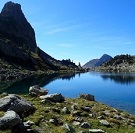
Long-term Evolution of Noncrystalline Uranium in Lake Sediments – Contact: Pierre Lefebvre (CNRS-Sorbonne Université-MNHN-IRD)
Uranium contamination in our environment is a serious threat to public health. Successfully managing the problem to mitigate health impacts requires an understanding of how environments affect the different forms of uranium, the chemical reactions at work, and the molecular species that are created over time. The reduced state of uranium, U(IV), can become sequestered by crystalline formation with a low solubility and less risk to humans and other life than the more mobile oxidized state U(VI). But the reduced state U(IV) can also exist in the environment in non-crystalline molecules that are more soluble and therefore more of a health concern. Read more...
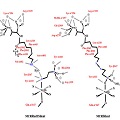
Deciphering the Mechanism of Enzymatic Methane Synthesis – Contacts: Ritimukta Sarangi (SSRL) and Stephen Ragsdale (University of Michigan)
The biosynthesis of methane is significant because this molecule is both a good source of energy and a greenhouse gas. Despite its importance, the processes by which methane is made is not well understood. Methane is synthesized by methanogens, archaea found in anaerobic conditions like bogs and the guts of mammals. Only these microbes are able to perform the tricky reaction of turning hydrogen gas and carbon dioxide into methane and water. Read more...
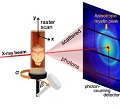
Quantifying Myelin and Axon Orientations in the Brain – Contact: Marios Georgiadis (Stanford University)
Made of a repeated structure of proteins and fats, myelin insulates our nerve cells, allowing signals to travel quickly and efficiently. If myelin is damaged, nervous system signals will not transmit as well. The degree of myelination could be an important diagnostic for brain health because it is disrupted in almost all known brain diseases. Yet current technologies to observe and measure myelin are inadequate for diagnostic applications. Read more...
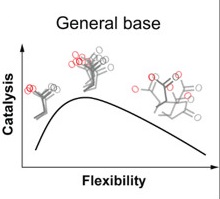
X-ray Crystallography-derived Conformational Ensembles to Better Understand Enzyme Catalysis – Contacts: Daniel Herschlag (Stanford University), Filip Yabukarski (Chan Zuckerberg Biohub) and Tzanko Doukov (SSRL)
Enzymes’ ability to speed biochemical reaction rates is the core of life processes, and much of molecular life science research involves understanding how an enzyme’s structure (often found through x-ray crystallography or NMR) is related to its function (biochemical analyses of the reaction). Pinpointing the 3D arrangement of atoms in the active site of an enzyme gives insight into the reaction intermediates and energetics, but may be conceptually misleading since enzymes, like all molecules, are constantly in motion. Read more...
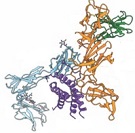
Structure-based Tuning of Interleukin Receptor Complexes to Promote Anti-tumor Immunity – Contacts: Caleb R. Glassman and K. Christopher Garcia (Stanford University)
Cytokines are small proteins that communicate messages between cells of our immune systems. Secreted from one cell and recognized by other cells through membrane receptors, cytokines carry information about pathogens, cancers, or other problems that concern the immune system. Interleukin 12 (IL-12) and interleukin 23 (IL-23) are cytokines that help to activate lymphocyte immune cells, like T cells and NK cells. Read more...
More SSRL-Related Science
Scientists Show a Single Catalyst can Perform the First Step of Turning CO2 into Fuel in Two Very Different Ways
Excerpt from SLAC News Article by Glennda Chui
Virtually all chemical and fuel production relies on catalysts, which accelerate chemical reactions without being consumed in the process. Most of these reactions take place in huge reactor vessels and may require high temperatures and pressures.
Scientists have been working on alternative ways to drive these reactions with electricity, rather than heat. This could potentially allow cheap, efficient, distributed manufacturing powered by renewable sources of electricity. But researchers who specialize in these two approaches – heat versus electricity – tend to work independently, developing different types of catalysts tailored to their specific reaction environments.
A new line of research aims to change that. Scientists at Stanford University, SSRL and the SUNCAT Institute for Interface Science and Catalysis reported that they have made a new catalyst that works with either heat or electricity. Based on nickel atoms, the catalyst accelerates a reaction for turning carbon dioxide into carbon monoxide – the first step in making fuels and useful chemicals from CO2. Read more...
Solving a Long-standing Mystery about the Desert’s Rock Art Canvas
Excerpt from SLAC News Article by Nathan Collins

Wander around a desert most anywhere in the world, and eventually you will notice dark-stained rocks, especially where the sun shines most brightly and water trickles down or dew gathers. In some spots, if you are lucky, you might stumble upon ancient art – petroglyphs – carved into the stain. For years, however, researchers have understood more about the petroglyphs than the mysterious dark stain, called rock varnish, in which they were drawn. In particular, science has yet to come to a conclusion about where rock varnish, which is unusually rich in manganese, comes from.
Now, scientists at the California Institute of Technology, SSRL and elsewhere think they have an answer. According to a recent paper in Proceedings of the National Academy of Sciences, rock varnish is left behind by microbial communities that use manganese to defend against the punishing desert sun. Read more...
Strengthening Global Connections during the COVID-19 Pandemic
Excerpt from University of Leeds Faculty of Engineering and Physical Sciences News
By running remote experiments at SSRL, a team of researchers at the University of Leeds has advanced its research into the complex molecular structure of soaps. Using remote access technology, and collaborating with researchers at SSRL, the team were able to facilitate experiments using small-angle x-ray scattering (SAXS) capabilities at SSRL's BL1-5. The researchers examined how the properties of a synthetic detergent, Sodium Lauroyl Isethionate (SLI), responds as it crystallizes or cools, after being exposed to varying intensities of heat. Read more...
The Rapid Rise of Angle-resolved Photoemission Spectroscopy (ARPES)
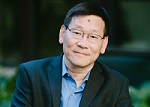
Jonathan Sobota and Zhi-Xun Shen, investigators from the Stanford Institute for Materials and Energy Sciences (SIMES) and Yale's Yu He recently published a 70-page paper on angle-resolved photoemission (ARPES) studies in Reviews of Modern Physics (doi: 10.1103/RevModPhys.93.025006). Shen, a former PhD student at Stanford advised by William E. Spicer and Ingolf Lindau, has been using ARPES to study quantum materials since the mid-1980s and through several adaptations of the ARPES capability on BL5 at SSRL. He co-authored the canonical ARPES review in the same journal back in 2003. See Physics Tree for Zhi-Xun Shen
Awards
Ilya Belopolski Wins 2021 Spicer Young Investigator Award for Work on Exotic Quantum Materials
Excerpt from SLAC News Article by Nathan Collins
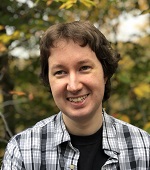
It was 2015, and Ilya Belopolski and colleagues had made a remarkable discovery: A prediction made nearly nine decades earlier by a particle physicist could come true – not in elementary particles, but instead in the collective motion of electrons inside a crystal of tantalum arsenide.
Belopolski and others have continued to explore that phenomenon, known as Weyl fermions, in what are known as topological materials. In 2017, working at SSRL, he and teammates showed that certain magnetic materials could host the fermions and how magnetism can drive Weyl fermion physics. Since then, they have also discovered new and unusual quantum behaviors in electromagnetic fields related to Weyl fermions in cobalt manganese gallium.
Now, SSRL’s 2021 Spicer Young Investigator Award is going to Belopolski in recognition of his work, much of which has been carried out at SSRL. Belopolski will be giving a talk on his award-winning research at our Annual SSRL/LCLS Users’ Conference. Read more...
Beam Line Updates
First Light Milestone on BL16-1
Congratulations to the project team who recently achieved first light on SSRL’s newest beam line, bend magnet BL16-1. BL16-1 joins sister BL16-2 to provide sponsor NNSA and the SSRL user community metrology capability extending from 50 eV to >40 keV. BL16-1 utilizes a water-cooled double crystal monochromator to cover the 2.1-40+ keV portion of this spectrum and provide overlap to the 50-2300 eV plane grating monochromator tune range of BL16-2. Each of these beam lines is designed to provide uniform illumination over a 25 mm by several mm sample area with good spectral purity as required for careful characterization of optics and detectors. Notably, BL16-1 also delivers white light capability to the end station thus enabling measurements that benefit from broader energy band width. With this breadth of energy coverage, along with the white light capability, the BL16 suite of metrology stations offer the NNSA sponsor and SSRL users a powerful and versatile platform for characterization studies of optics and detectors as well as, more generally, technique or experiment development.
Events
S2C2 CryoEM Map Modeling and Validation Workshop, September 8–10, 2021 Workshop website
SSRL/LCLS Users' Conference, September 20–24, 2021 (Virtual) Website & No Cost Registration
Every year, thousands of scientists from universities, laboratories, and private companies around the world use our cutting-edge research facilities. Their discoveries benefit a wide range of fields, including materials and energy sciences, chemistry, biology, medicine, environmental science, engineering, astronomy, and physics.
This annual meeting is a unique opportunity to gather together the lightsource community in a single scientific event that includes numerous presentations in plenary, poster, and parallel sessions. Participants can learn about current/future facility capabilities and the latest user research and discuss science with colleagues from academia, research laboratories, and industry worldwide. Come join us remotely for the opportunity to join the following sessions for scientific exchange, discussions, awards and poster sessions. There is no cost for this event but you must register to access the plenary and poster sessions and 25 workshops. See agenda
Pittsburgh Diffraction Conference (PDC), September 19–21, 2021 (Satellite Conference)
Held as a satellite conference in conjunction with the SSRL/LCLS Users' Conference the 78th Annual Pittsburgh Diffraction Conference is a three-day event featuring lectures and poster presentations. The goal of the conference is to bring together researchers in all areas of fundamental and applied diffraction and crystallographic research to present current topics. The program includes femtosecond diffraction methods, hybrid methods for structural biology, powder diffraction and material science research, new ideas in crystallography and exciting macromolecular structures. Find more information at: https://smb.slac.stanford.edu/news/PDC-2021/
AVS 67th International Symposium, October 24–29, 2021, Charlotte, North Carolina - AVS67 website
Announcement
Submit Nominations for the SSRL Users’ Executive Committee by September 5
We welcome candidates interested in standing for election to the SSRL Users Executive Committee (UEC). The UEC provides an organized framework for interaction between the SSRL scientific user community and SSRL Management. We are currently seeking nominations from the Environmental/Geosciences, Materials Science/Chemistry and Ultrafast communities. UEC elections are held annually in conjunction with the Users' Meeting. The SSRL UEC meets quarterly to plan the Users' Meeting in coordination with the LCLS UEC, select recipients for several awards, provide input to SSRL management on topics of interest to the user community, and to raise awareness about SSRL capabilities, user science and accomplishments to a broader audience. Nomination form
The Stanford Synchrotron Radiation Lightsource (SSRL) is a third-generation light source producing extremely bright x-rays for basic and applied research. SSRL attracts and supports scientists from around the world who use its state-of-the-art capabilities to make discoveries that benefit society. SSRL, a U.S. DOE Office of Science national user facility, is a Directorate of SLAC National Accelerator Laboratory, operated by Stanford University for the U.S. Department of Energy Office of Science. The SSRL Structural Molecular Biology Program is supported by the DOE Office of Biological and Environmental Research, and by the National Institutes of Health, National Institute of General Medical Sciences. For more information about SSRL science, operations and schedules, visit http://www-ssrl.slac.stanford.edu.
To unsubscribe from SSRL Headlines, just send an e-mail to listserv@slac.stanford.edu with "signoff ssrl-headlines" in the body.
To subscribe, send an e-mail to with "subscribe ssrl-headlines" in the body.
Questions? Comments? Contact Lisa Dunn




